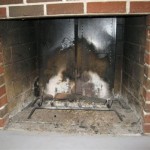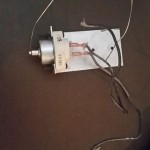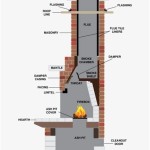Cost of Running a Gas Fireplace Per Hour: A Comprehensive Guide
Gas fireplaces offer a convenient and aesthetically pleasing alternative to traditional wood-burning fireplaces. They provide instant heat, require minimal cleanup, and are generally easier to operate. However, understanding the cost of running a gas fireplace is crucial for budgeting and making informed decisions about its usage. This article delves into the factors influencing the hourly cost of operating a gas fireplace, allowing homeowners to estimate their expenses accurately.
Pinpointing the precise cost of running a gas fireplace involves several variables, with the price of natural gas and the fireplace’s BTU (British Thermal Unit) input being the most significant. Other factors include the fireplace's efficiency rating, the frequency of use, and regional differences in gas prices. This analysis aims to provide a comprehensive overview to help estimate these costs effectively.
Understanding BTU Input and Gas Prices
The BTU rating of a gas fireplace indicates the amount of heat it can produce per hour. A higher BTU rating typically translates to a greater heating capacity and, consequently, a higher gas consumption rate. Gas fireplaces commonly range from 20,000 to 40,000 BTU, although smaller and larger units exist. The BTU rating can usually be found in the fireplace’s user manual or on a sticker affixed to the unit itself.
The cost of natural gas is measured in dollars per therm, where one therm is equal to 100,000 BTU. Natural gas prices fluctuate based on market conditions, supply and demand, and geographical location. Homeowners can typically find the current price per therm on their monthly gas bill or by contacting their gas utility provider. These prices are generally expressed in dollars per therm, facilitating a standardized calculation across different gas providers.
To calculate the hourly gas consumption, divide the fireplace's BTU rating by 100,000. For instance, a 30,000 BTU fireplace consumes 0.3 therms per hour (30,000 BTU / 100,000 BTU/therm = 0.3 therms). This calculation provides the foundation for determining the overall operational cost.
Calculating the Hourly Cost
Once the gas consumption rate in therms per hour is determined, the next step is to multiply this value by the cost per therm to arrive at the hourly operating cost. Using the previous example of a 30,000 BTU fireplace consuming 0.3 therms per hour, if the cost of natural gas is $1.50 per therm, the hourly cost would be $0.45 (0.3 therms x $1.50/therm = $0.45). This simple calculation offers a clear understanding of the direct gas expenses associated with running the fireplace for one hour.
It’s important to note that this calculation provides a baseline estimate. The actual cost may vary depending on factors like the fireplace's efficiency rating. Some fireplaces are designed to maximize heat output while minimizing gas consumption, whereas others might be less efficient. A fireplace with a higher efficiency rating will generally cost less to operate per hour, even with the same BTU input. Fireplace efficiency is often expressed as a percentage; a higher percentage indicates greater efficiency.
The thermostat settings also play a crucial role. Running the fireplace at its maximum heat setting will inevitably consume more gas than operating it at a lower setting. Similarly, the duration of operation significantly impacts the total cost. Running the fireplace for several hours each day will result in a substantially higher monthly gas bill compared to occasional usage.
Additional Considerations and Factors
Several additional factors can complicate the cost calculation. Firstly, fireplaces using propane instead of natural gas will have different operating costs, as propane prices typically differ from natural gas prices. Propane is often sold by the gallon, requiring conversion to a comparable unit to perform the calculation.
Secondly, older gas fireplaces may be less efficient than newer models. Technological advancements have led to more efficient designs that extract more heat from the same amount of gas. Upgrading to a newer, more efficient fireplace can potentially reduce long-term operating costs, although the initial investment may be significant.
Thirdly, the cost of electricity to operate the fireplace’s blower fan and ignition system should be considered. While the electricity consumption is generally minimal compared to the gas consumption, it can still contribute to the overall cost, especially if the blower is used frequently. Checking the appliance energy efficiency rating is also important.
Finally, regional variations in natural gas prices can significantly impact the operating cost. Areas with abundant natural gas supplies may have lower prices compared to regions where gas needs to be transported over long distances. It is essential to use the specific gas price applicable to the homeowner's location for accurate cost estimations. Consult with your local gas supplier for more information. Remember to factor in any taxes or fees that your local utility may charge on top of the base price.
In summary, the cost of running a gas fireplace per hour is a dynamic value influenced by the BTU rating, gas prices, fireplace efficiency, usage patterns, and regional factors. Accurately assessing these elements allows homeowners to effectively budget for their fireplace usage and make informed decisions about energy consumption.

How Much Does A Gas Fireplace Cost Fireplaces Direct Learning Center

How Much Does A Gas Fireplace Cost Fireplaces Direct Learning Center

How Much Does It Cost To Run A Gas Fireplace Per Hour Day Month

Fireplace Installation Cost 2024 Gas Wood Burning Electric

2024 Gas Fireplace Insert Costs

How Much Does A Gas Fireplace Cost Fireplaces Direct Learning Center

Do Gas Fireplaces Heat A Room Contact The Flame Company Today

How Much Does It Cost To Run Electric Fireplace In 2024

Fireplace Installation Cost 2024 Gas Wood Burning Electric

How Much Does A Gas Fireplace Cost Fireplaces Direct Learning Center
Related Posts








